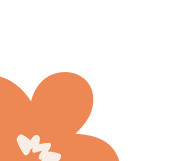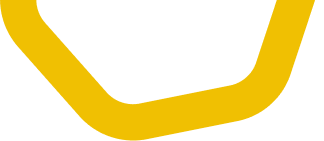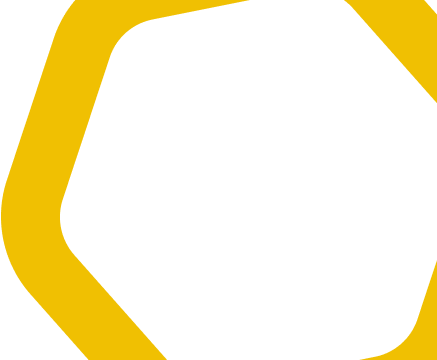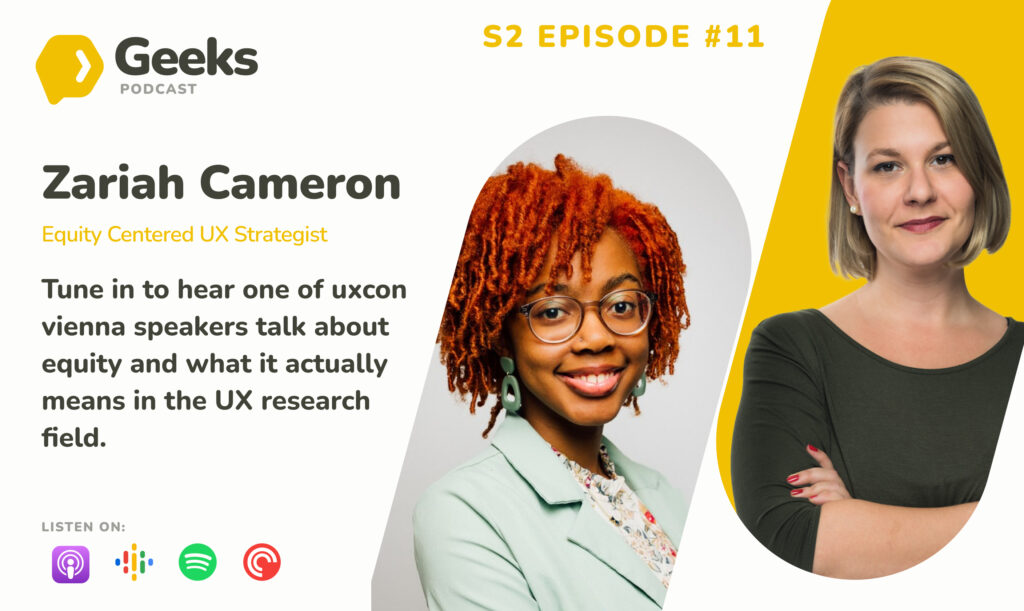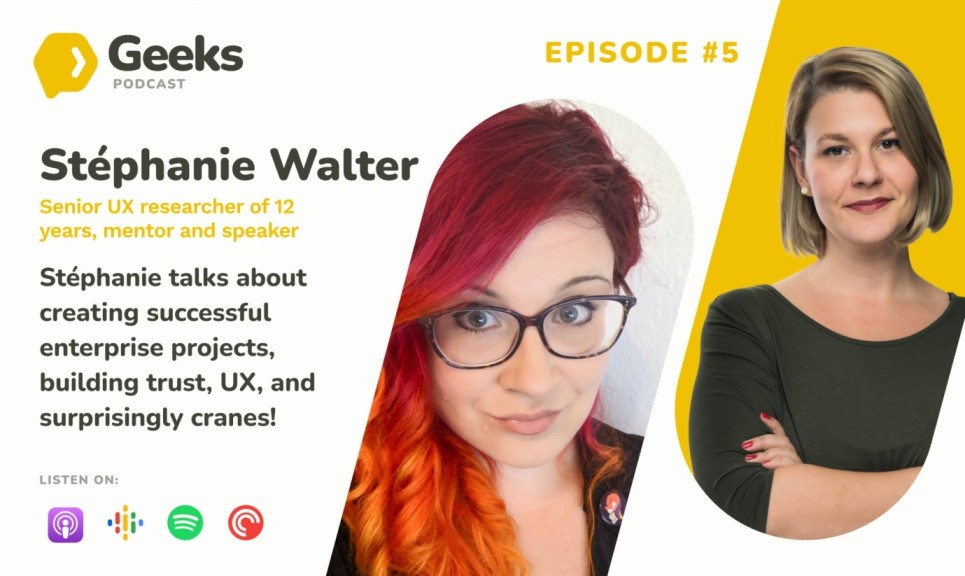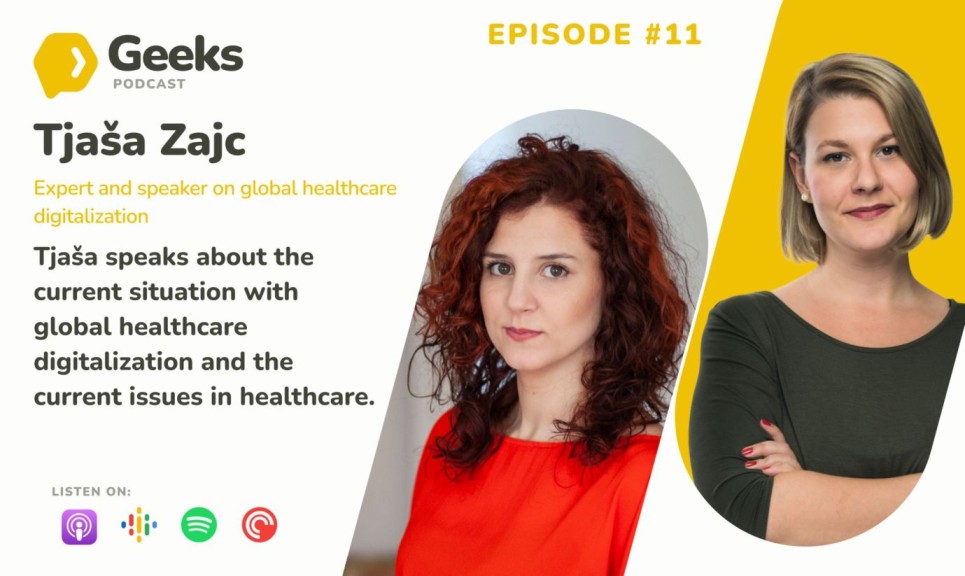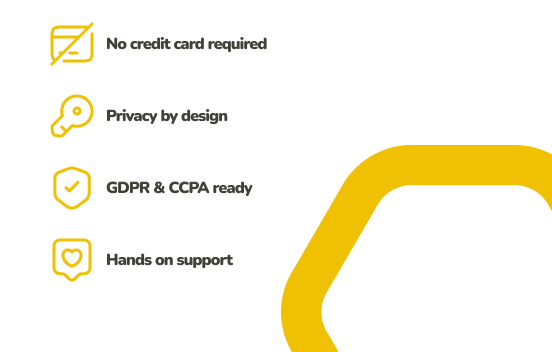Episode highlights
00:03:09 – User needs and technological capabilities
00:07:45 – Example of co-creation with users
00:15:00 – Conversations with users and stakeholders
00:19:06 – Conversations with technical teams
00:22:32 – Lessons from Amanda’s practice
00:27:19 – Importance of continuous learning
About our guest
Amanda is an experienced delivery strategist and program lead known for her expertise in collaborating with multidisciplinary teams. She has a proven track record in strategizing, planning, and executing research strategies, as well as designing and delivering digital experiences across multiple industries.
Amanda is currently the VP of Partnerships + Operations at Optimistic Design. Lately, her focus has been on the education sector, where she has developed key partnerships with the Bill & Melinda Gates Foundation, Khan Academy, MDRC, and USC Shoah Foundation.
Additionally, she supports edtech organizations in integrating equity-centered approaches into their product R&D processes, playing a crucial role in their growth, support, and capacity building.
Podcast transcript
[00:00:05] Tina Ličková: Welcome to UXR Geeks, where we geek out with researchers from all around the world and topics they’re passionate about. I’m your host Tina, a researcher and a product manager, and this podcast is brought to you by UXtweak, the UX research platform for recruiting, conducting, analyzing, and sharing insights all in one place.
This is UXR Geeks, and you’re listening to a conversation that I had with Amanda. Amanda is a vice president of partnerships and operations with a background in program and product management. In this episode, we will talk about her expertise in collaborating with multi-disciplinary teams and including users as active stakeholders in the product development process.
Tune in.
[00:01:11] Tina Ličková: Hello Amanda.
[00:01:12] Amanda Di Dio: Hi Tina.
[00:01:13] Tina Ličková: So another very interesting topic into our podcast, but before we jump into it, let’s hear who are you, what do you do? What is important to learn about you?
[00:01:24] Amanda Di Dio: My name’s Amanda Di Dio, I use she/her pronouns, and I’m the VP of partnerships and operations at a design research and strategy consultancy called Optimistic Design.
And uh, what we do is support our clients and partners through a variety of different projects that primarily focus on building digital products. Solutions or services within a variety of domains, and that could be for small business all the way to enterprise type of digital products for solutions. Our differentiator is that we focus on leveraging human-centered design frameworks as part of our solution path towards delivering our work.
And we usually work with our clients on how to build their own capacity on how to integrate human-centered design as part of their practice and process within their own organization. My background is in program and product management, and I’ve worked with a variety of different types of organizations, building small to enterprise type software.
[00:02:31] Tina Ličková: So Amanda, and we were speaking and gathering some thoughts on what to speak about, and you came up with a topic, which I find really interesting because it’s very. Pragmatic, practical, but going to the point where research could have a big impact, and that is balancing user needs with technological capabilities in product development.
And I’m wondering, how do you define main problem in the attempt of balance user needs with the technical capabilities? What would it be in your opinion?
[00:03:04] Amanda Di Dio: I think there’s a few components to sort of describing this problem space. And for those who are sitting on a team that usually has a representation of product design and engineering, you all know what this feels like to be able to triangulate, oh my gosh, this is what a user wants, and we just don’t have the technical capability to be able to resolve those needs.
And it happens often and I think the core challenge. For me that comes up when those conversations happen is just ensuring that the user needs aren’t sidelined once technical realities come into play. And I think oftentimes system constraints become the defacto prioritization tool, but without involving the conversation of the cross-functional teams that I just mentioned.
So the design and product, and also representation of the user. We often see the decision making starts to lack a full. Picture. So what I’d like to say is how do we think about treating users and coining them as active stakeholders in shaping solutions? And I think even if we hear from users that what it is that is their core challenge or problem isn’t immediately doable, it’s a critical insight and usually is pointing us to work where the greatest need is.
And I also have seen in my own experience that a lot of the more innovative solutions that we’ve been able to implement have come from the conversations we’ve had with users. So I think product engineering, compliance, regulatory environments and infrastructure, we all need to be at the table with research when prioritizing.
So feasibility is actually grounded in the end user contacts. And not just abstracted by technical limits. And I think that is a challenging conversation, but I also think it will definitely help to validate. How we make those trade offs.
[00:05:13] Tina Ličková: And there are few points that I wanna get into, but I start with the term active stakeholders.
As you coin the users, I would love to hear what do you actually mean by it? And as you were also telling that it’s coming from your experience, could you maybe tell me an example of such an involvement of the users in the early stages from your projects that you were working on?
[00:05:41] Amanda Di Dio: Yeah, happy to In the product R&D.
So the research through development process, oftentimes users are treated as providers rather than partners for shaping a direction. So for example, in a lot of frameworks that are used to develop product or getting user feedback or involvement, you typically get feedback from the beginning where you might interview a user and understand, um, if the product direction that you are sort of thinking about building is right.
You might go away, build the thing, you prototype it, and then you bring them back and you test it with them, and then you launch your product and market it. What we’re sort of describing is flipping that paradigm. It’s actually bringing in users from the beginning to help inform what the problem space is.
Deeply understand what their context, their motivation, the behaviors are as part of that problem space helped us to actually provide the solution for what those features could be. And even help prioritize what the future backlog could look like. They also can help shape concept ideas, be a co-designer or co-creator in that process, and then continuing on through to validate a product in through its maturity all the way through launch.
It’s actively bringing them in and being able to facilitate co-creation, participatory design sessions with them. And the way that we describe why that’s effective is in the beginning you’re collaborating with them to help design the right thing, and then you’re continuing to collaborate with them to design the thing.
Right.
[00:07:16] Tina Ličková: And as you were mentioning, co-creation, that’s something I really love, although I try not to be methodologically in love with something, but I remember the most. Aha moment or something that impacted the products very well and the whole team was having co-creation session and working with this active stakeholders mindset with the users.
So would you have maybe an concrete example from a project from your client or somewhere where you worked before?
[00:07:50] Amanda Di Dio: This is pretty timely. We just wrapped up an engagement with a client on where. We were brought in to help to think about how to design a strategy for a net new product in the early learning education space to help support teachers and educators on utilizing data that they collect from assess.
To track where kids are in the classroom more effectively. There isn’t a product yet in that space that actually triangulates and surfaces up data more meaningfully. And so our client was like, this is a ripe space for us to create a product direction. And so what we did and sort of worked with them on is how do we actually create a feature product vision in a direction?
That is grounded in the needs of educator and teacher and family needs versus what we hypothesize the feature direction and product. To do based on just the desk research we have. So we started with field research. We went to classrooms, we talked to teachers so that we can contextually understand how they’re collecting data, how they’re utilizing the tools now, and what could be an opportunity for some new product to impact the spaces that we are trying to fill around.
The problem that we saw, and we learned a lot. We learned more about what teachers really needed than what we maybe had assumed, and that was, we don’t need another tool to collect data. We need better visualizations to align all of the data streams that are coming in. And we had, we had not gone and contextually saw how they were using tools today and heard from them on what they really needed.
I think we would’ve built. A proof of concept or an MVP of something that wouldn’t actually solve a core need. So even with that field research, that was just the starting point. We then went back to them with a proposed feature list and also put in front of them prioritization mapping and had them help us determine what those features were from a front end perspective, what would be the most usable for you?
How would you prioritize them? What do you feel like wouldn’t be helpful? And then that also helped to shape how we would spend our time creating generative design concepts for front end, and helped us to prioritize our time thinking about the technical roadmap. And then we brought them in again and they helped us shape if the use of AI in some of our solutions was something that they would even use.
And then as we were bringing them in through the steps of. Understanding and shaping a product direction, validating a feature backlog and product roadmap, prioritizing the features they would actually use. We started to gain their trust. They started to get buy-in on this product. They started to get really excited about wanting to continue to be involved, to co-design and to validate and to test once we had a proof of concept created.
So I think the. Process of bringing them early in. This is as early in as you possibly could bring in someone to create a product. We also then brought that to other stakeholders, our, you know, technical stakeholders, those who are, you know, within the AI space, and shared their insights with them, and were able to ground the insights that we brought as to this is not just what they want and what they need.
This is actually why, here’s all the context for how they would use it more effectively. That helped open up their minds to more innovative technical solutions. Like maybe we bring in generative AI to help us sort and align multiple data streams, for example. Or how do we think about a multi-use for, for sharing information back to the families that they work with.
So I think that’s all to say that we. Really thoughtfully co-created a product vision with the end users and validated that not just as a want with our other stakeholders, but really the why behind it. And we now have a product vision, a prioritized backlog. We have early concept designs that have all been co-created and validated with end users and other cross-functional stakeholders.
[00:12:34] Tina Ličková: We’ll be arrived back after a short break with a commercial message from our sponsors. Hello, UXR Geeks. This is Tina speaking. You might already know that this podcast is brought to you by UXtweak. A research tool and research tools are great until you need five of them to run a proper study. That’s why I actually use UXtweak.
It handles everything from concept testing to usability checks. Both moderated and unmoderated. It also takes care of the analyzers with no message spreadsheets, no frustrating dashboards or endless reports. Just clear insights ready to share. So if you’re curious, go to uxtweak.com website and start for free.
No credit card and no strings attached.
Wonderful because, uh, what you are actually doing, and I know it’s not a very used practice. That when I was looking into, well, how do I learn new methods? I came to this, okay, I want to crosscheck myself and my biases as well because I’m human and still research and trying to be objective. That’s my aim.
But there is like a concept of auditing oneself. And it’s either you show your research and your insight to other researchers, what people usually don’t have the luxury in some companies or in some projects, or if you are a freelancer or you go to the users and actually ask them about, okay, we came with this and what do you think about it?
And you actually did this whole conversation. If I understand it right with them and with the stakeholders and shaped the vision, which is beautiful and goes. Even further in the questions on how to actually deliver insights and make them actionable. So yeah, that’s a very beautiful example. I’m wondering when you start those conversations, I know some researchers.
Are trying to go into these conversations, but people around them are busy and they’re like, oh, it’s your job. And sometimes ends just with, you know, a research readout and that it’s done. What would you say is important while having as a cornerstone in this conversations, how to start them and how to build them up?
[00:15:05] Amanda Di Dio: I think you’ve hit on something that is a reality for a lot of teams. Research is siloed. They’re also seen as being brought in a specific injection points in a process rather than a through line and a continuous growth. For cross-functional teams to really understand the value of research and also to really understand the methods that are used.
And so I think the first point I would probably land on is bringing cross-functional teams into the fold on research, planning and education around the methods. And I think that context will help to ground insights when they’re shared. Because the shaping of those protocols and the discussion guides, what kind of questions are we asking and why, but being able to build the capacity even to an engineer, to just see that work and to help them understand the process.
Is gonna make things, I think, a little bit easier for when they see those insights because then they, they’re gonna understand, well, why did you use this method? Or why did you use this framing at the point of your talking to a specific audience? Right. I do think it is also a buy-in as a team to value that mindset, that it is a cross-functional responsibility for understanding.
Research insights and to understand the value of why research really informed product decisions and how they make a stronger product. So I know that’s maybe a little bit of a higher hill to climb, but I do think it is a shared responsibility and, and a mindset that everyone on a team could do some reaching across to better understand.
I think delivering insights is evolving. To be able to not just share, these are the insights, these are just what they want, but actually shaping that insights share so that it can illuminate what matters and what trade-offs might be acceptable from the team’s perspective, but also starting that intuitive leap to not just frame the insights and.
This is all urgent and these are things that users want, but also to start to categorize them as, Hey, here are emerging needs that we know and I prioritized. Here are opportunities for us to consider and evolve, and here’s some downstream implications of if we don’t. Potentially take action on the needs and then invite a conversation with cross-functional teams to start to think about how to decipher thematically around those insights.
Like these are emergent, here are some opportunities for us to continue to explore, and then here’s where we need to really think about impact if we don’t. So it’s not just a handoff. It’s a actual conversation and a little bit more of the abstraction of the insight into framing the insight into where it can take action for the product.
I think those are some little just like tips that I found to be really helpful when there has been more of the cold handoff, right, of here’s your insights and versus a conversation.
[00:18:24] Tina Ličková: There are extreme through this conversation when technical people come in and I love to do and show insights and talk about insights and negotiate even insights with technical people.
But there are two edge cases in those conversations. People there are saying. It could be backed up with user insights, which are really strong, but they’re like, no, we can’t do it. It’s not feasible. And on the other hand it is like, oh, we should be doing this. Not reacting to the user insights because they wanna, I don’t know, build it in some language model or put some kind other type of technology, which they’re excited about.
They just want to do the tech stuff. So how do you handle personal, this type of conversation?
[00:19:10] Amanda Di Dio: It’s definitely a negotiation and I also think for the more meaty asks that are not technically feasible, I usually invite like the conversation to help create a pathway that’s a small, a medium, and a large to potentially solving that it’s not feasible at all because there’s usually something that can be done.
It may not be the exact thing, but it might be a stepping stone to start to get to like underlying. Need that’s there. That might not be the ultimate need. That’s like a bigger lift completely, you know, disrupting the system or a core technology. But what can we do? How do we be more thoughtful towards ideating around a smaller lift that’s possible.
And those conversations have gone well. It actually has gotten engineers excited because they like the opportunity to problem solve and their immediate reaction is. It’s not technically feasible in our tech stack, or that would create an engineering pipeline that’s gonna be so disruptive on all these other emergent things, and it’s okay, that is actually valid.
Totally understand. Let’s think about maybe a smaller lift. Maybe it’s a smaller tweak that we haven’t thought about. So let’s come up with that and then I usually take it back to the users. Okay. We couldn’t do this one edge case. Bigger lift, but we’re really thinking about this as a stepping stone. How do you feel about that?
And so I think it’s that inviting that conversation, having an openness to think more creatively, and then think about the stepping stone. So I think that’s one tactic that I found to be successful. I think that there are sometimes top down needs where the market, we need to prioritize this thing that may be in conflict with what our user needs because.
That’s just the competitive landscape and sometimes those prioritizations need to be met, and I think that’s okay. I think it’s just a group conversation around all taking the responsibility and accountability of making that decision and potentially understanding the risks. To that. If we don’t solve this need for the user, we’re reprioritizing elsewhere and we’re all agreeing.
That’s the thing to do. Are we in alignment to the risk that could ha actually cause if we don’t? So it’s just documenting and having conversation around that alignment and illuminating all the educations of the things that could happen if you don’t solve that need. And making sure folks are really aware of that and.
Always entering those conversations with a solution mindset and trying to really ground the user need into the potential possibilities of impact. So what would this impact if we are able to solve it, and how are we all aligning towards the assumed or potential risks if we don’t?
[00:21:46] Tina Ličková: The next question goes into what are your lessons learned?
But I will do something that I’m not usually doing, and I’m reading the first takeaway or a lessons learned that we put into the list. And I don’t wanna provoke, but I am little bit cautious about what a user wants. The first takeaway is you wanna always be able to deliver everything users ask for, which I think in the end is a good thing.
Right. It’s also very interesting how you validate the research insight and the new features and the prioritization with users. So before we jump into the lessons you learned, last question. Is, how do you actually make sure to really see the distinctions between what people want and what they actually need?
[00:22:37] Amanda Di Dio: I think that comes down to really great research protocol and experience to really ask more probing questions around the true want. Versus a motivation and behavior change. And I think that comes down to the protocol and a lot of times it’s mixed methods, just having a discussion. A qualitative interview is great for some specific ways to gather insights, but other methods are even more impactful.
We use different activities. Through engaging ways for users to not just vocalize, but to show. And I think that also has been really helpful. So I think that it does come down to being a little bit more experienced and being able to navigate and sense and suss out and be able to guide the deeper thinking towards, is this a want or can I get a little bit more information to understand where that’s coming from?
And that happens all the time, right? Where we’re like, we really need to be able to decipher that. We also thematically group, so we have large participant pools. Where is this an acute issue or an acute need or an acute behavior change? Is this one that’s more thematically one that we’re seeing as a theme or a consistent pattern?
So I think that also helps to substantiate as well. Yeah, I would advise thinking about mixed methods, thinking about how you ask the question and then how you are continuing to probe to get away from, is this really a want? Versus is this a deeper behavior or systems problem with the product?
[00:24:07] Tina Ličková: And I really like what you were saying, how acute is this?
Because it also could make you help with the prioritization and with the feasibility on pushing the buttons. Okay. But this is what we have to do, even if it’s not that feasible right away. Very nice. Good. And to wrap it up, because you are an experienced person, and I love the process because it’s super participatory.
And I think it’s very much validating yourself as a researcher. So what are the lessons learned and takeaways you would give, not only to maybe researchers?
[00:24:39] Amanda Di Dio: Yeah. I think just generally, I know this is a little hard when you are in a working environment and you are still trying to find your voice, but don’t shy away from tension from the conversation around alignment.
It sometimes can be really intimidating, but I think in the way that you approach it with. Inviting perspectives with a common shared common goal of what are we trying to get out of that alignment, I think has been really helpful in bringing teams together and working through some healthy tension because user need and product need and value is just, it’s healthy tension.
It’s the way we build products, right? So I would definitely empower those not to shy away from that. I have seen the most meaningful innovations come out of those conversations. That would be the first. The other would be treat feedback like, like a map towards the goal, not a checklist, right? Think about how you’re gonna prioritize, how you’re gonna be thoughtful for where the first implementation of feedback should sit, and then to see where the rest might uncover more.
So prioritize. Think about mapping and think how you deliver those insights to engineering and design or product teams. I think designing with users, not just for them, is one that I embody and our team embodies as much as we possibly can. It’s. Switching that paradigm. It’s researching with, designing with not just like four.
I think another is treat technical constraints as a creative input. It’s not a complete barrier. It’s a input. It is a consideration as part of how you think about the research and design. It’s not the barrier, right? So still ask the questions and still try to get as much as you can from the users knowing that there could be constraints.
Still try to reach over the funds to, to figure out what the true problem might be. And then I think my last lesson learned in working really closely with active stakeholders and treating our users as a true stakeholder, is that the transparency and trust in bringing them into the process. Will benefit tenfold in sustaining them as not only advocates for your product, but as a way to fuel innovation.
So those are my lessons learned, and I am more than happy to engage with others who want to connect with me, to learn more
[00:27:07] Tina Ličková: before we tell people where to find you, where to follow you. I do have a last question. Mm-hmm. Is there anything that I didn’t ask you? That we still have to bring up.
[00:27:19] Amanda Di Dio: I think about other frameworks of research and design that you’re interested in.
Learning is a great way to keep methods and modalities fresh, constantly thinking about. Different frameworks or educating ourselves on different research frameworks, different methods, joining communities or different convenings and conferences and talks, because that has definitely helped us build our little arsenal of different methods to pull from.
So for researchers, designers, engineers alike in understanding design thinking and human-centered and equity centered design or inclusive design. Educate on those frameworks, understand what works for you, how to think more differently and broadly. It’ll only just make you a stronger contributor, but also give you a little bit more perspective on how to continue to ground end user needs.
So constant learning.
[00:28:15] Tina Ličková: Beautiful. Beautiful. That’s what the podcast is a little bit about, so I’m happy you are preaching for that. Good. And where can people follow you? Maybe when you were mentioning now that you are presenting on conferences, maybe you a heads up on where you will be next. We just came out of
[00:28:30] Amanda Di Dio: conference season for a few conference you out south by Southwest, CDU and A-S-U-G-S-B.
We do a lot of work in the education space and social impact space, so you could find us at Optimistic Design. That’s our website. You could also follow me on LinkedIn, Amanda Dillo, and also the example that I had mentioned. We just put out a thought leadership post about that project. Specifically.
Please check out our insights page and you’ll find that post there. And also feel free to reach out to me directly. My email address is amanda.dio@optimisticdesign.com
[00:29:04] Tina Ličková: Thank you. Thank you, Amanda. It was a pleasure.
[00:29:07] Amanda Di Dio: Yeah, same. Tina, thank you so much for having this podcast and inviting me to connect with you today.
[00:29:17] Tina Ličková: Thank you for listening to UXR Geeks. If you enjoyed this episode, please follow our podcast and share it with your friends and colleagues. Your support is really what keeps us going.
If you have any tips on fantastic speakers from across the globe, feedback, or any questions, we would love to hear from you, so reach out to geekspodcast@uxtweak.com.
Special thanks goes to my colleagues, to our podcast producer, Ekaterina Novikova, our social media specialist, Daria Krasovskaya, and our audio specialist, Melissa Danisova.
And to all of you, thank you for tuning in.
💡 This podcast was brought to you by UXtweak, an all-in-one UX research tool.
